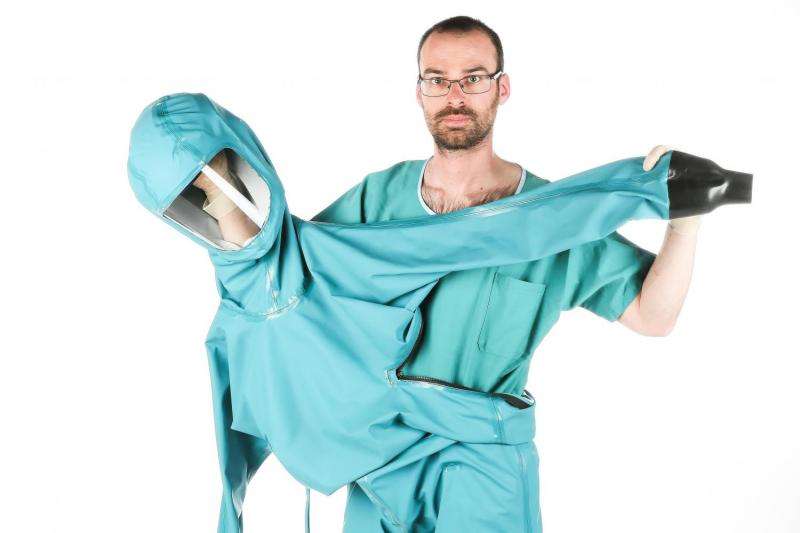Protective suit against Ebola and future epidemics

Following the Ebola outbreak in West Africa, EPFL is joining forces with Geneva University Hospitals and the University of Geneva to develop a new protective suit. The initiative is driven and supported by doctors working on the front lines.
Health workers from around the world battled the Ebola epidemic in West Africa for over three years. Yet the hermetically sealed suits they wore to protect themselves from the deadliest epidemic on record were stifling and ill-adapted for tropical countries.
New safety gear that is more comfortable, reusable and possibly even less expensive – while offering the protection needed by health workers tending to people afflicted with Ebola – is now being developed by EPFL and Geneva University Hospitals (HUG) in collaboration with the Swiss Federal Laboratories for Materials Science and Technology (EMPA), Doctors Without Borders and the University of Geneva. The prototype will be on display for three days at the Geneva Health Forum.
100 suits thrown away every day
"When you dress to enter the contaminated zone, you have to put on around 10 different layers," said Laurent Kaiser, who works at the Virology Laboratory at HUG and is a professor at the University of Geneva medical school. "You also wear a diving mask that quickly fogs up, surgical gloves and thick aprons. Not to mention that after an hour of sweating in the red zone in your plastic suit your boots are full of water." This protective gear, whose design has evolved with every new epidemic over the years, takes nearly 15 minutes to put on and take off. And it can only be used once in most cases.
A prototype one-piece hermetically sealed suit, designed to be disinfected and reused, has been developed as part of the EssentialTech program at EPFL's Cooperation and Development Center. "At the treatment centers, hundreds of contaminated suits were destroyed every day, tens of thousands per quarter, despite the cost and all the environmental risks," said Matthieu Gani, the project manager. A sturdy ventilation system still needs to be developed, funding for which is now being sought.
Safer and cheaper
The protective suit designed by EPFL and HUG and produced by Sf Tech – a Swiss company that specializes in drysuits for diving – must be washed in a chlorine solution and can be used for three months. According to the financial projections, the new gear will cost around four times less than the models currently in use. It will also facilitate storage and resupply. The prototype was designed to be worn for three hours straight, which will improve the quality of care provided to patients.
Prototype presented to the WHO and the public
The one-piece protective suit met with real interest when it was presented at a meeting of the World Health Organization. This is because finding effective protective equipment for health workers remains a major challenge in the fight against emerging Ebola-type infections. The prototype is on display for three days at the Geneva Health Forum, where visitors can even try it on.


















